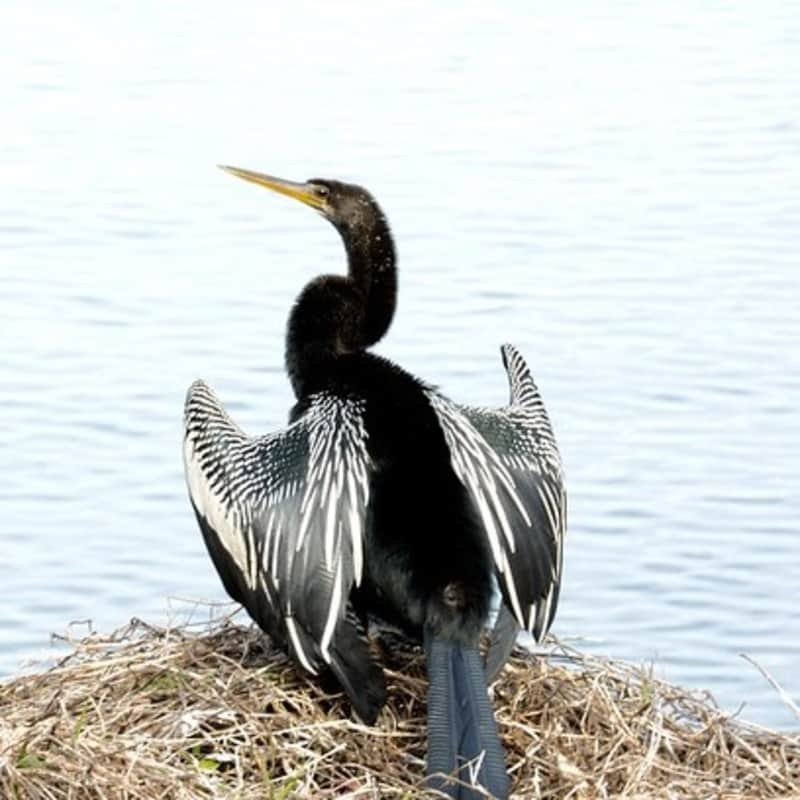The anhinga, Anhinga anhinga is a tropical American water bird. Anhinga means “devil bird” or “snake bird” in Tupi. When swimming, just the neck shows above water, resembling a snake poised to strike. They have no external nares and only breathe through their epiglottis. The anhinga, like other darters, hunts by spearing fish and other tiny prey. They belong to the genus Anhinga in the family of Anhingidae.
Quick Overview: Anhinga anhinga – Anhinga
Body size: Around 35 in (89 cm) and a weight of 1224 g (43.2 oz)
Main colors: Green-black, Silver-gray, Black, Brown
Range: Atlantic and Gulf coastlines in the United States
Migratory Bird: No
Best time of the year to see in the U.S.: All Year (January – December)
Conservation Status: Least Concern
Anhinga Description
Male anhingas have stronger colors than females. Males have greenish-black plumage with silver-gray upper back and wings fringed with long white plumes. Their crests are black. Brown with a brighter brown head and neck; youngsters are brown. The simultaneous molting of all flight feathers renders them flightless. Unlike some aquatic birds, their entire body feathers become wet when in contact with water, allowing them to dive deeper. This causes them to sink, lose heat fast, and hampers flying.

Size
These birds have a length of 35 in (89 cm) and a weight of 1224 g (43.2 oz). Their wings could range from 45-48 in (114-122 cm).
Feeding
Anhingas eat mostly fish (Percidae, Centrarchidae, Peociliidae, Cyprinodontidae), but also aquatic invertebrates and insects (Percidae). They are adept underwater hunters, depending on their swift necks and keen bills to seize prey. Underwater, they hunt slower-moving fish, ultimately lashing out with their long neck and spearing the victim. They then move the prey above water to consume it headfirst.
Habitat
Inhabitants: Anhinga anhinga favors freshwater and coastal aquatic environments with shrub- or tree-covered islands or shorelines. Anhingas can hunt slow-moving prey, hide from danger in the water, and sun themselves in trees.
Behavior
Anhingas take off either sprinting on the water or diving from a tree. They frequently return to the water by gliding or crawling from a perch. Due of their low buoyancy, just the head and neck are visible. They spend much of their time in the water fishing or perched on trees. They often crawl from the water to a high perch to the sun. Anhingas, like cormorants and turkey vultures, dry off their feathers by expanding their wings.
Anhinga anhinga Scientific Classification
- Kingdom: Animalia
- Phylum: Chordata
- Subphylum: Chelicerata
- Class: Aves
- Order: Suliformes
- Family: Anhingidae
- Genus: Anhinga
- Species: Anhinga anhinga
Best time of the year to see
In the United States, the best time of year to see these birds is all year round, regardless of the season. This refers to any month of the year between January and December.
Distribution of the Anhinga in the USA
In the Atlantic and Gulf coastlines from North Carolina to Texas, in Florida and the Mississippi Valley from southern Missouri, Illinois, and Kentucky. During the winter, it may be seen along the Gulf Coast from Florida to South Carolina. It can also be found in tropical America.
